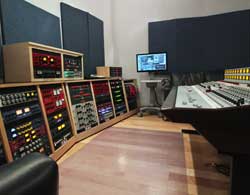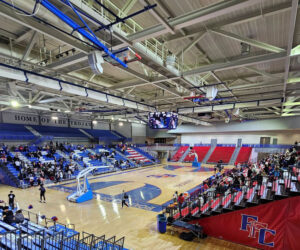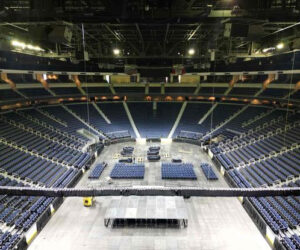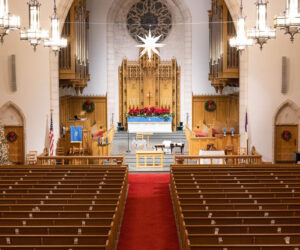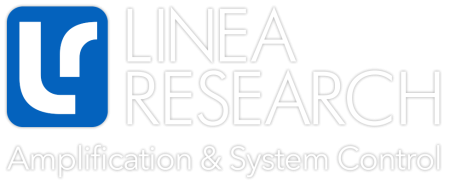Mix One, a new music mixing and recording venture located within the historic Coast Recorders studio complex on Mission Street in San Francisco, has opened for business with a 32-channel Rupert Neve Designs 5088 analog mixing console.
The new 5088 desk provides critical summing, routing and mixing functionality in the newly refurbished Mix One control room, which is equipped with a wall-to-wall credenza outfitted with high-end analog microphone preamplifiers, equalizers and dynamics processors, as well as an array of reverb options, a 48 I/O Avid Pro Tools|HDX system and a pair of ATC SCM150ASL main monitors.
The core of the audio equipment complement at Mix One has been relocated from a private mix studio owned and operated by Tom Richardson. Sean Beresford, well known for his long tenure as Third Eye Blind’s recording engineer, as well as his extensive work with Vanessa Carlton and numerous other artists, is chief engineer and in charge of day-to-day operations.
The Mix One team, which also includes technical guru Desmond Shea and Alex Oropeza, completely rebuilt and rewired the control room, which has been modified several times over past decades by previous occupants, to bring it up to the standard of the approximately 30-ft. x 40-ft. live room, which was designed and built in the 1970s by industry legend Bill Putnam of Universal Audio fame.
Beresford, who had no previous experience with the 5088, has already found time to mix several projects on the console.
“What I really love about the 5088 is that it doesn’t have that thick muddiness that for me some newer consoles have,” he said. “I guess some people might consider the 5088 to be colored in some way, and I guess it does have a kind of warmth and depth you’d expect from anything Rupert Neve designed. But honestly, I find it to be really transparent and open and airy sounding.
“The depth of field and stereo imagery on the console is fantastic, and I’m finding that I’m able to get to a good point in a mix very quickly. I wasn’t sure what to expect of a modern day Rupert Neve design after having used his vintage ones for so long, and I’ve got to say I’m very impressed.”
“We decided we wanted the transparency of the 5088, and we really wanted the transient response,” added Richardson. “It’s a really great sounding console. It doesn’t really impose itself on the tracks; things just come through and they’re right.”
The 5088 console is configured without the optional Rupert Neve Designs mic preamp and EQ modules in order to take advantage of the vast collection of outboard analog equipment at Mix One from manufacturers such as Chandler, Daking, D.W.Fearn, Focusrite, Langevin, Manley, Pendulum, Vintech, Wunder and others.
Jeff Briss and the team at Cutting Edge Audio Group consulted on the project and supplied the majority of the control room equipment.
“It really fits our workflow,” said Richardson of the 5088. “Once we come out of the DAW we want to stay analog. We can patch any of the outboard gear between the outputs of the DAW and the console, and we can interface any of the dynamics into the buses. Whatever we want to do, it’s all on the patchbay.”
Shea, who also had a hand in selecting the 5088, almost single-handedly stripped the control room back to the sub-floor and cinder block walls, rebuilding it according to a drawing from Richardson and applying acoustical treatment. “He turned it into a pretty amazing sounding room,” commented Richardson. “He really brought it back to its former glory and made it sound as good as the live room.”
The building at 1340 Mission was established as Mercury Recording in 1969 and was remodeled by Bill Putnam in 1971 as the now legendary Coast Recorders. Veteran mastering engineer Michael Romanowski, who moved his Michael Romanowski Mastering operation into 1340 Mission in 2002, acquired the building and re-established the Coast Recorders name at the beginning of 2012. He has restored the live room — the largest in San Francisco — to its original Putnam design and materials and has added a second mastering room, and mastering engineer Piper Payne to his staff.
In addition to the newly opened Mix One, the facility also houses The Tape Project, Romanowski’s business collaboration with mastering engineer Paul Stubblebine, as well as two other independently operated mix rooms.


